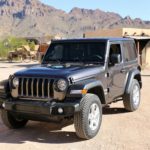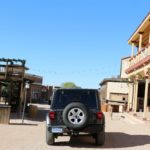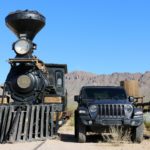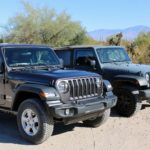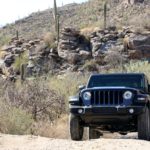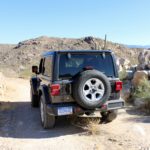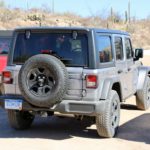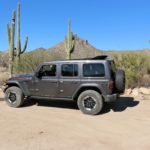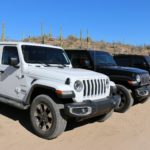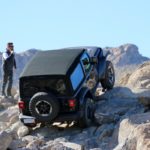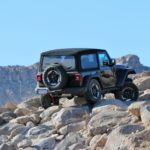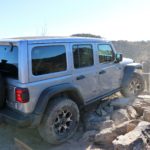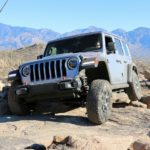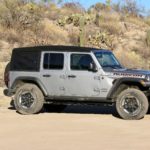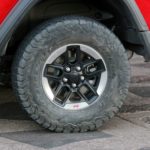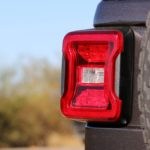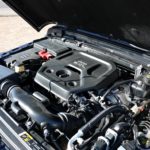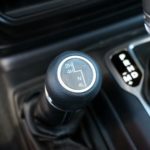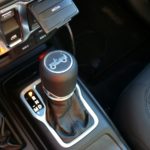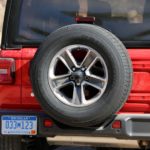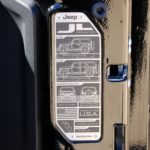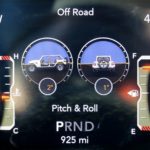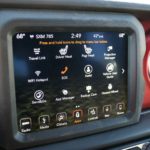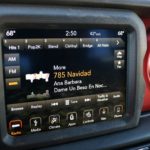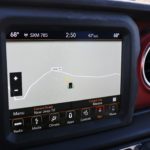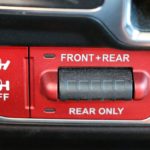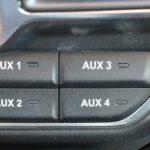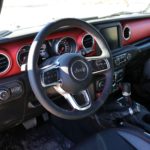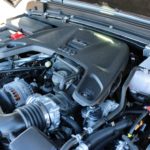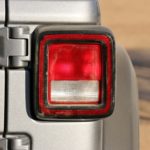We Finally Drive the All-New 2018 Jeep Wrangler!
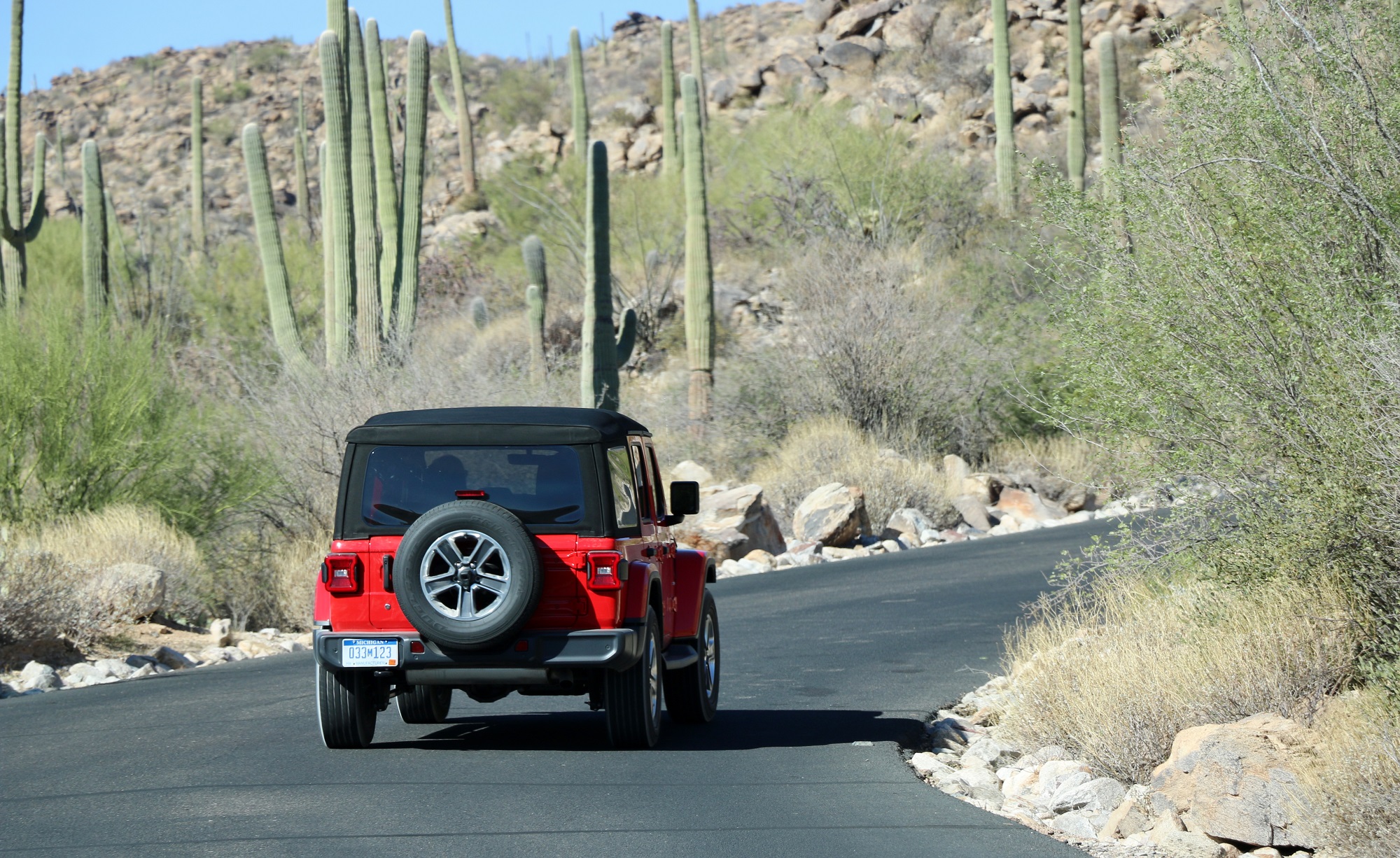
JK-Forum flies out to Arizona to cruise roads and crawl rocks in the completely redesigned and reengineered JL version of the Jeep Wrangler.
A new Jeep Wrangler doesn’t come around often. After being introduced as a 2007 model, the JK version of the off-road icon is still in production. We’ve all been waiting more than a decade for the next-generation JL model to come out, which means Jeep has had that much time to figure out the JK’s shortcomings, fix them, and build upon its strengths. The automaker flew me and droves of other journalists out to Arizona to decide if the all-new Wrangler has been worth the wait.
Like the outgoing Wrangler, the 2018 model will be available in two- and four-door Unlimited configurations. Both body styles can be outfitted with the Sport, Sport S, and Rubicon trim lines; the Sahara package is an option on the Wrangler Unlimited only.
Engineers have cut weight through an extensive use of lighter materials. Eighty percent of the fully boxed frame is high-strength steel, making the JL’s backbone lighter and 18 percent stiffer than its predecessor. The doors, hinges, hood, fenders, and windshield frame are made out of aluminum; the rear swing gate is magnesium. The hinges are clearly stamped with the Torx bit tool size needed to remove the doors, which feature a Lift-Assist handle under each armrest to make removal and carrying easier. Thanks to the new diet, the Wrangler’s doors now weigh 47 pounds a piece up front and 34 pounds each in the back – improvements of 14 and seven pounds, respectively. According to Jeep, it’s reduced the total weight of the two-door Wrangler by approximately 140 pounds and shaved more than 200 pounds off of the Unlimited. At its absolute lightest, the JL two-door tips the scales with 3,955 pounds of curb weight; at its heaviest, the Unlimited generates a reading of 4,485 pounds.
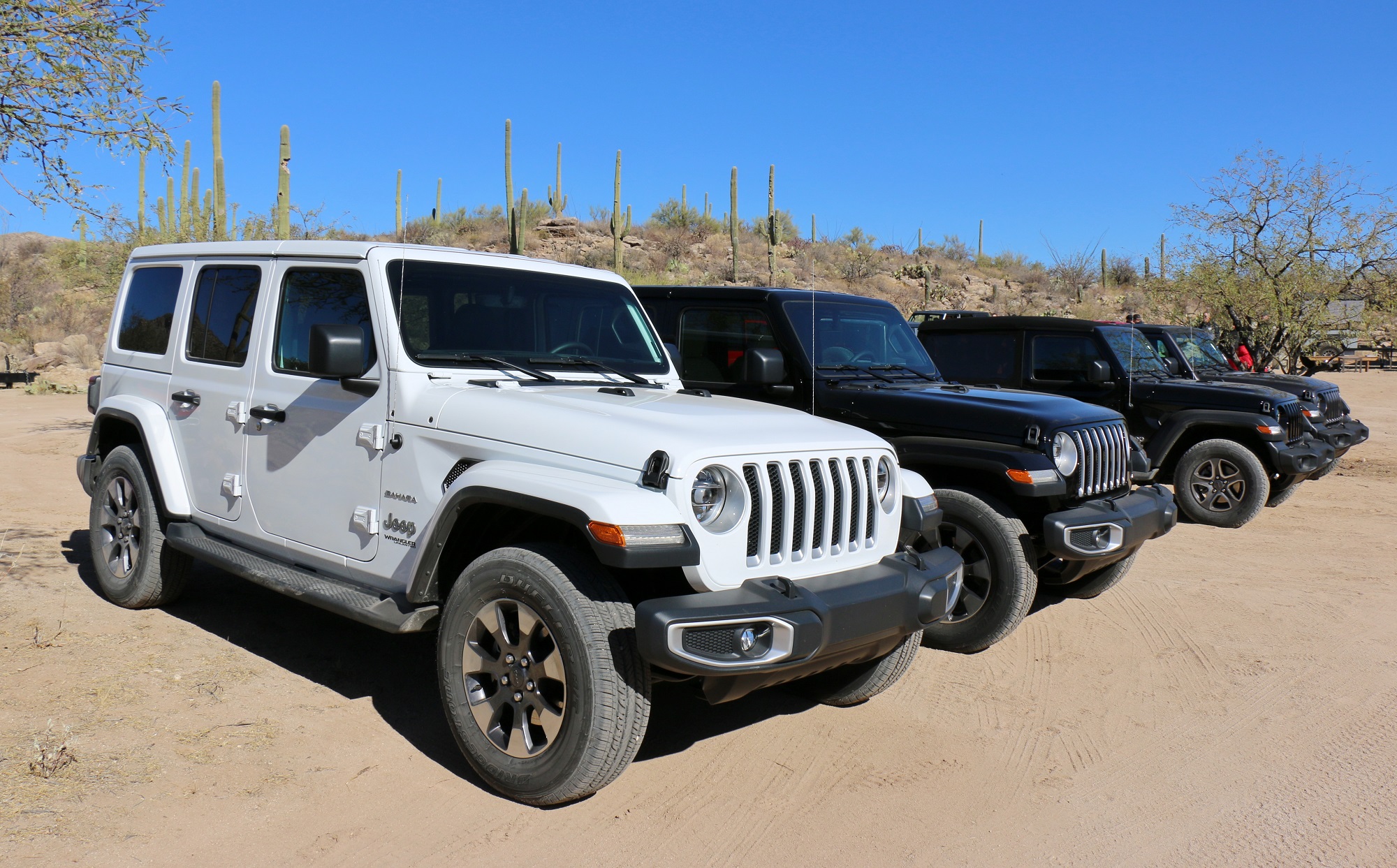
Upon first seeing the JL, I couldn’t help but nod my approval. Jeep knows how to keep a good thing going and cash in on its heritage. The JL is an exercise in evolutionary styling. It bears a strong resemblance to the already handsome JK, but looks broader, bolder, and beefier. The headlights (halogen or LED depending on how you order) are still round and jut into the first and seventh slots of the grille – a visual nod to the CJ-5, a personal favorite of Mark Allen, the head of Jeep design. That grille leans back as it approaches the hood. Along with other aero-focused touches such as the reclined windshield and tapered back end, it helps reduce drag by nine percent.
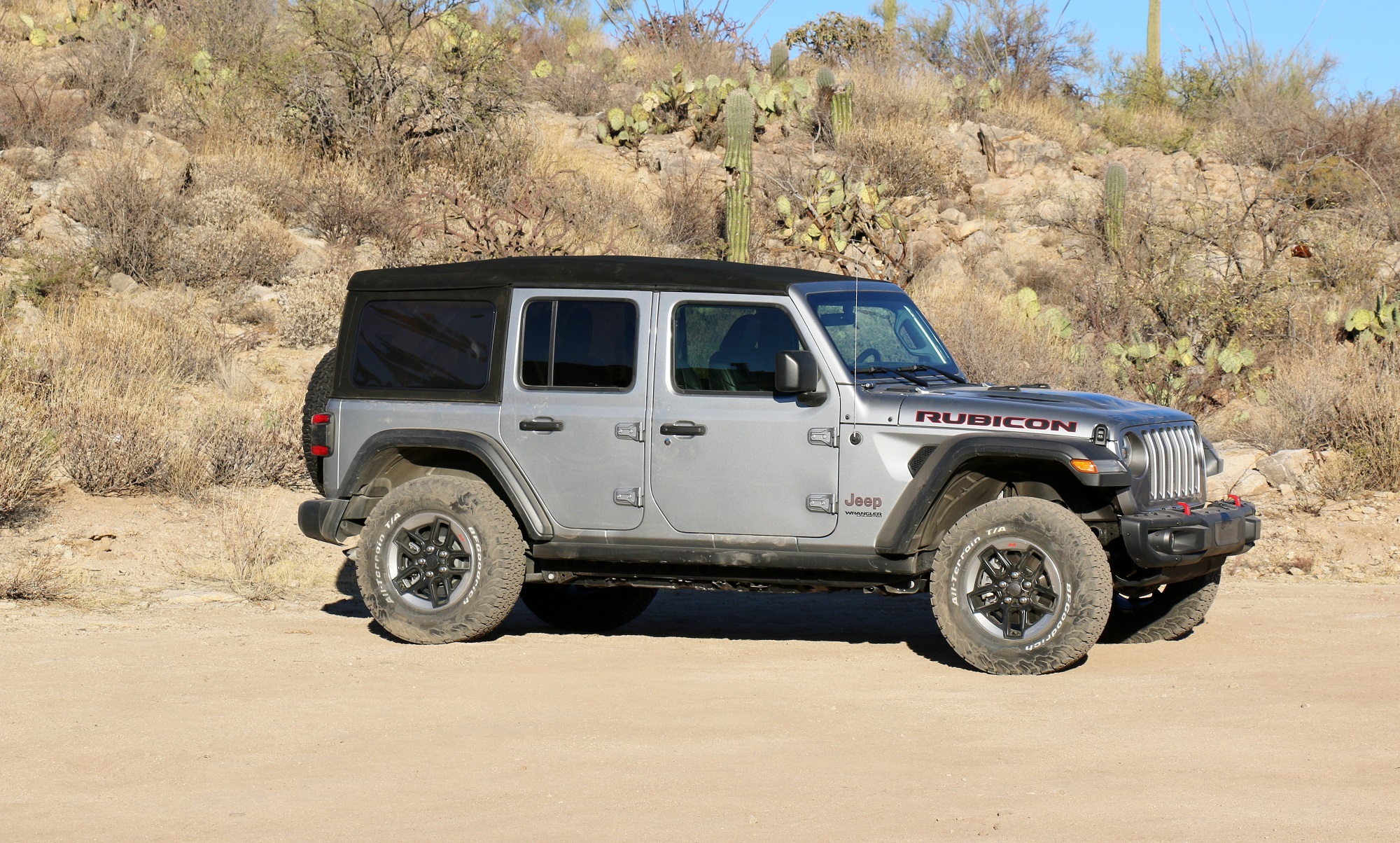
Wheelbase lengths for both Wrangler models have gone up. The two-door now has 1.4 more inches between its wheels (96.8 total) while the Unlimited has an additional 2.4 inches (118.4 total) so rear-seat passengers have a little extra room to stretch their legs.
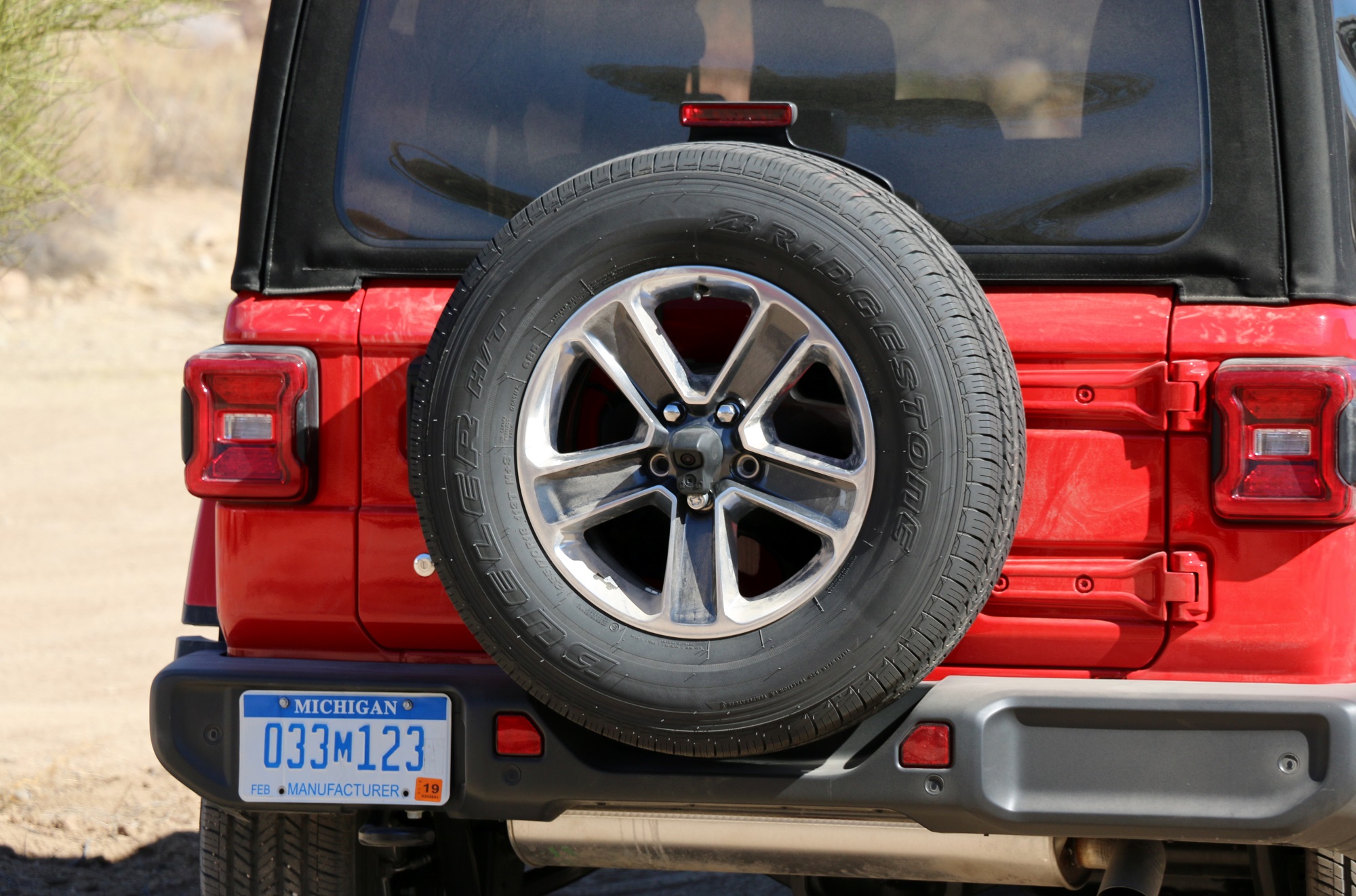
To improve outward visibility, Allen and his team gave the JL more greenhouse glass. Sight lines get even better when you remove the doors and fold the windshield down. What was once a complicated process now only requires pulling the wipers and extracting four bolts. Allen said he was able to get the windshield horizontal in less than four minutes. Most importantly, the JL Wrangler now has a backup camera.
You can get an eyeful of the sky above by lowering the Sunrider soft top into its partially or fully open positions, taking off the three-piece modular hardtop’s lighter Freedom panels, removing the body-color hardtop (available on the Sahara and Rubicon), or retracting the Sky One-Touch power top with the push of a button (only available on the Wrangler Unlimited).

The new Wrangler is available with a variety of standard and optional 17-inch and 18-inch wheels. If you look closely, you’ll notice the fenders are two inches higher up on the Rubicon than they are on the Sahara. That helps them clear the Rubicon’s standard 33-inch BF Goodrich KO2 All-Terrain tires and fit 35s, if necessary.
The vented front brake rotors are 12.9 inches in diameter. In the back, the solid rotors range in size from 12.9 inches for Sport models to 13.4 inches for Sahara and Rubicon models.
ALSO SEE: What Forum Members Have to Say
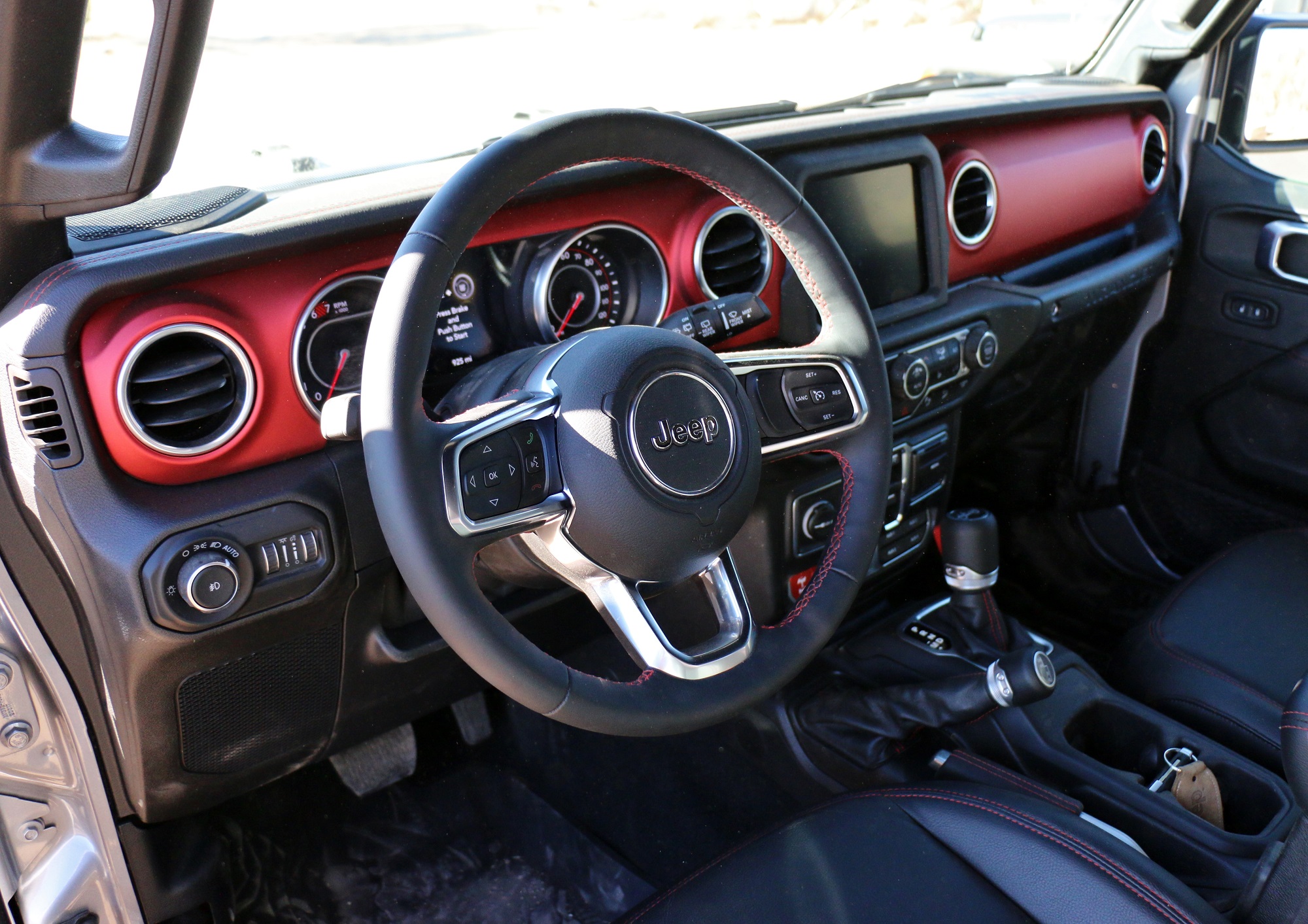
The interior design team for the JL did their homework and delved into the Jeep history books. They could’ve just thrown in some leather and screens and been done with it, but they made sure to incorporate design touches from bygone Willys and Wranglers, such as the line of circular elements on the dashboard and the stamped metal information plaque on the inner side of the swing gate.
Those homages are rolled into a variety of available interior themes, which depend on the trim line, and mixed with modern safety features, some of which include four standard airbags, blind spot monitoring, rear cross path detection, and that precious backup camera.
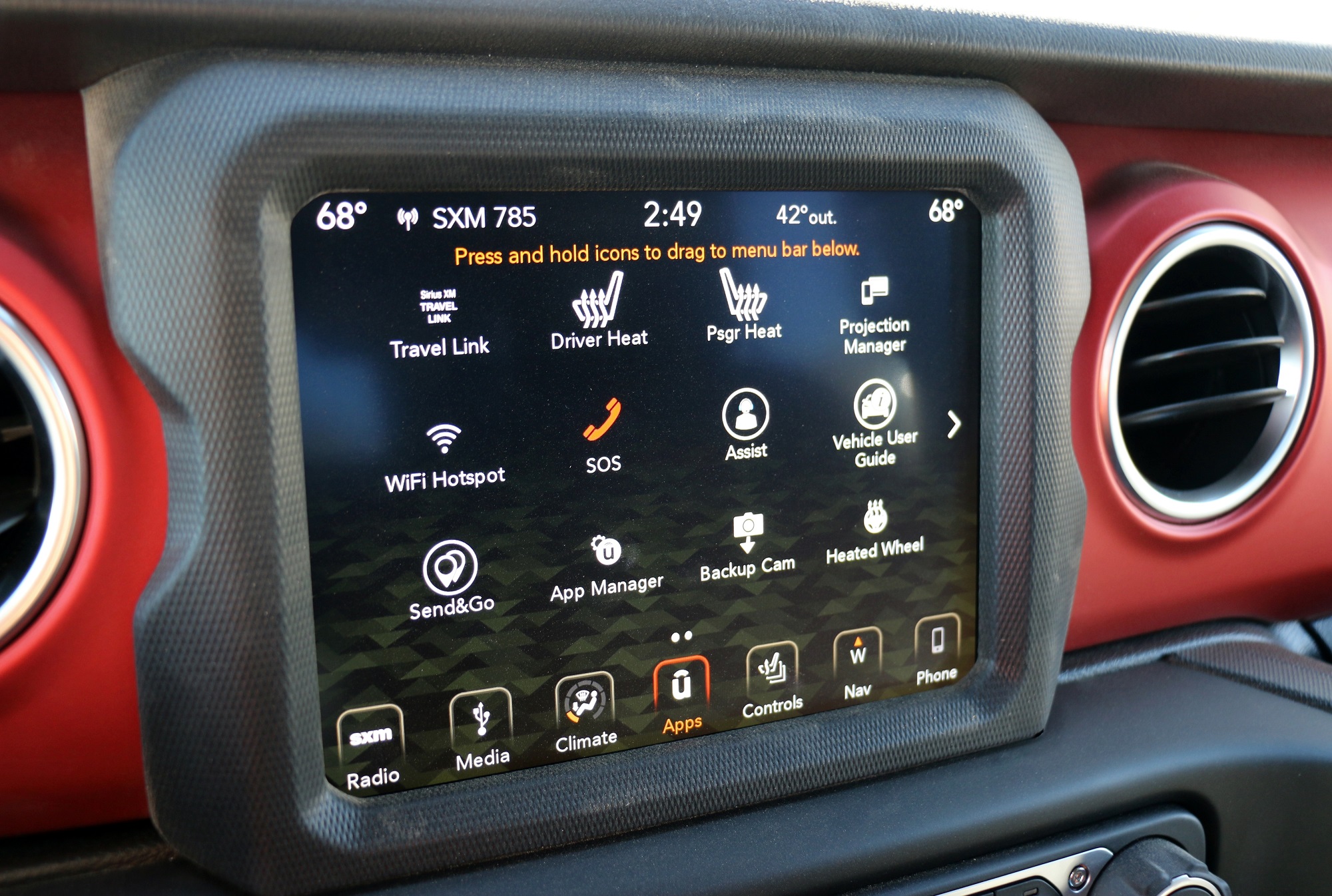
Jeep offers the all-new Wrangler with five-, seven-, and 8.4-inch center screens, as well as the fourth-generation Uconnect system. The larger units come with pinch, tap, and swipe capability; higher resolution; Apple CarPlay; and Android Auto. It only took me one glance at my test vehicle’s seven-inch display to know Jeep had fixed one of the JK’s biggest shortcomings. I’ve always found modern versions of Uconnect up to date, easy to use, and convenient. Technologically speaking, the new system brings the Wrangler into the 21st century.
When it was time for our cruise through the suburbs of Marana and Tucson, my driving partner and I picked a two-door Sport model. We used the new keyless entry system to open the redesigned door handles and get in. Doing that revealed another change to the Wrangler: doors that stayed open and in place on their own. It was cold and windy that morning, so I cranked up the three-stage heating for my seat (my co-pilot decided not to fire his up) and turned on the heated tilting and telescoping steering wheel. Once we were moving, I found the electro-hydraulic steering to be vague and slow off-center – just what I expected it to be. Even when my driving partner and I weren’t driving into a strong headwind – which was often that day – I heard a significant amount of wind noise from above. I was fine with that. My main concern was the Wrangler’s ride quality. The five-link front and rear suspension setups are paired with retuned shocks. Those adjustments paid off. The JL still rode like a body-on-frame rig, but it felt softer and gentler than any JK when I drove it over bumps and joints in the pavement.

The 285-horsepower/260-lb-ft 3.6-liter Pentastar V6 still reports for duty in the all-new Wrangler, but it’s now the base engine offering. The midrange motor is a new 2.0-liter I4 enhanced with a twin-scroll turbocharger and 48-volt eTorque hybrid technology. Official output is 270 horsepower and 295 lb-ft. According to FCA, eTorque’s “functions include auto stop/start, electric power assist, extended fuel shut-off, transmission shift management, intelligent battery charging and regenerative braking. Both the engine and fuel flow may be turned off during stops, coasting or when the engine is decelerating.” The two gas engines enable the two-door Wrangler to pull 2,000 pounds and the Unlimited to tow 3,500 pounds. The top-of-the-line power plant, a revamped EcoDiesel 3.0-liter V6 with 260 horsepower and 442 lb-ft of torque, won’t be available until 2019.

A six-speed manual remains an option with the Pentastar. An eight-speed automatic replaces the JK’s archaic five-speed box. The EPA determined the gas V6 can get 17 city, 23 highway, and 19 combined mpg with the manual gearbox and 18 city, 23 highway, and 20 combined mpg with the automatic. Those combined figures beat what I remember getting in the last Wrangler I had as a press loaner.
My two-door Sport tester had the 2.0 and the eight-speed auto. I found it peppy and responsive to my eager right foot. Under heavy load, it let out a charmingly raspy sound. I can see it being a popular choice for you future JL buyers. The JL’s weight loss made the Pentastar V6 livelier than it ever was in the JK.
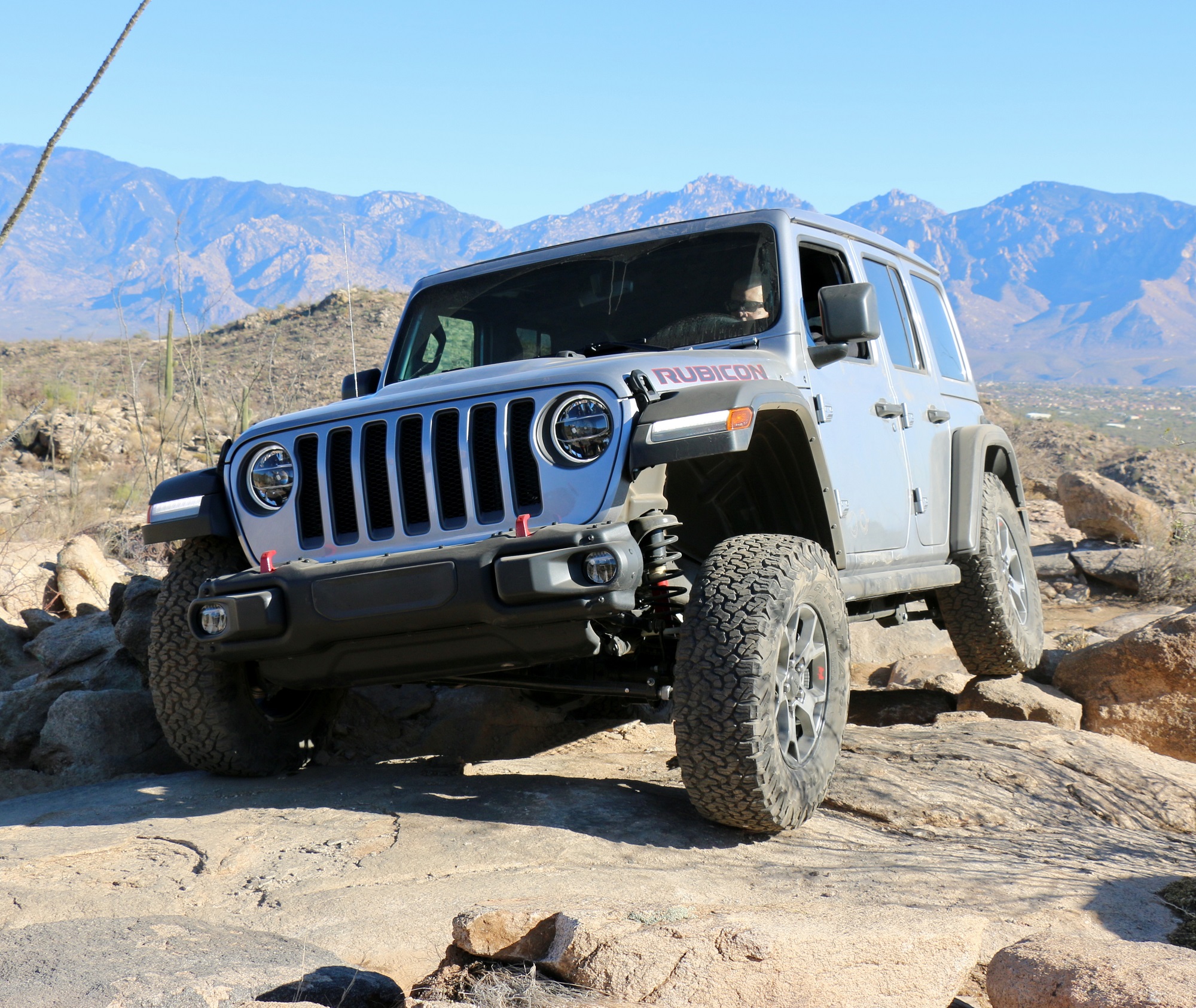
I ended my day in the desert with some rock crawling up the winding, rock-covered paths of the Saguaro Ranch in more than one Rubicon. Wrangler Sport and Sahara models get over rough land with the help of the part-time NV241 Command-Trac 4X4 system and its 2.72:1 low range. The Sahara can be equipped with an optional full-time MP3022 Selec-Trac four-wheel drive system that features a 4.0 low range ratio and 3.45 axle ratio. The Rubicon comes standard with the part-time NV241OR Rock-Trac setup, a 4.0:1 low gear ratio, and 4.10 gears.
Lesser Wranglers pack Dana 30 front and Dana 35 rear axles. Rubicons get an electronic sway bar disconnect up front and Dana 44s and Tru-Lok electronic locking differentials at both ends. An available Trac-Lok limited-slip differential provides additional grip in low-traction conditions. All of the controls for those goodies are now mounted below the HVAC dials and to the left of factory-installed upfitter buttons for add-ons such as a winch or light bar.
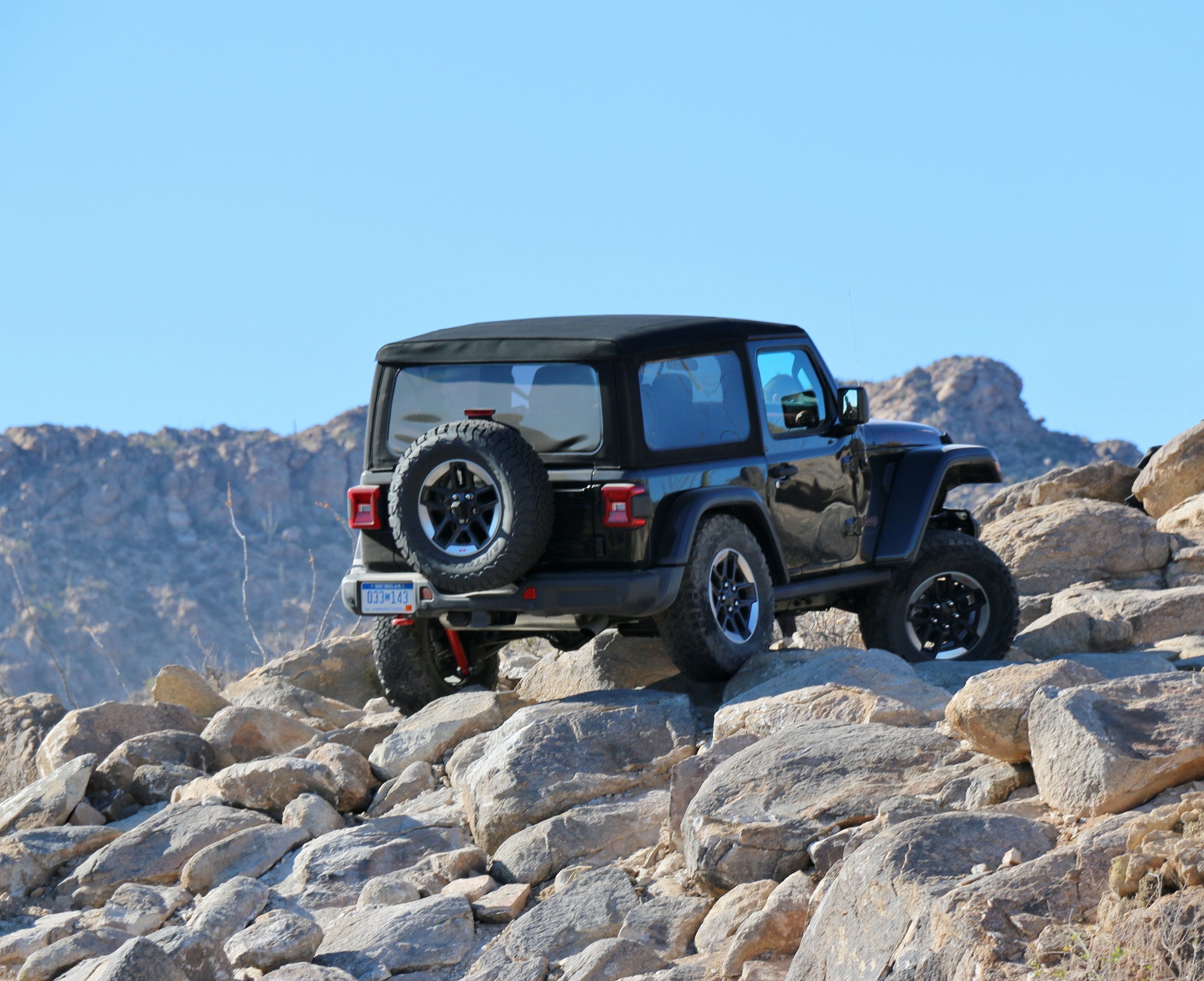
The dry ground didn’t give me a chance to use the top Wrangler’s 30 inches of water fording capability. However, the rugged course was a great showcase of the Rubicon’s exterior dimensions. Two-door Rubicons have 44 degrees of approach angle, 27.8 degrees of breakover angle, 37 degrees of departure angle, and 10.9 inches of ground clearance. Those figures are largely the same for the four-door Rubicon, with the exception of breakover angle, which dips down to 22.6 degrees.
The first time I went up the off-road course’s series of elevation changes and “hard driver” and “hard passenger” turns, I used an automatic JLU Rubi, its 77.2:1 crawl ratio (manual Rubis have an 84.2:1 ratio)…and its skid plates. Once I got more familiar with the path, my driving line improved. That experience was all I really needed. I pointed the Rubicon in the right direction and it basically took care of the rest. Several of the Jeep Jamboree trail guides praised my throttle management, but I couldn’t take credit for it. The Wrangler’s 4LO throttle tuning made low-speed climbing smooth and easy.
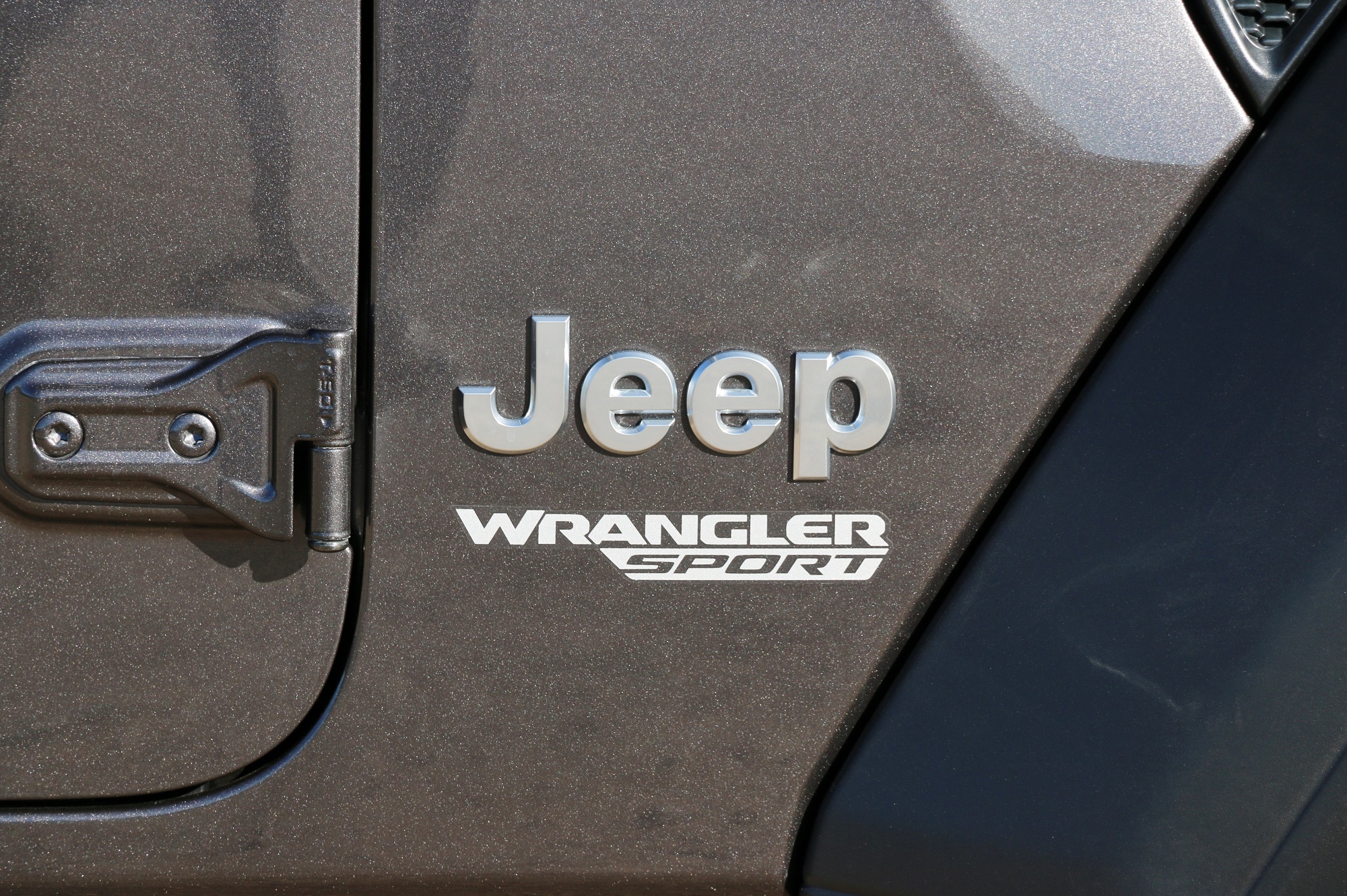
The all-new 2018 Wrangler has been a long time coming. Jeep has filled in the biggest holes of the outgoing model by making the JL more fuel efficient, technologically modern, and comfortable on the road. In the wild, it’s even more capable than it once was. All these years of anticipation did not end in disappointment.
You’ll be able to experience the 2018 Wrangler for yourself once it arrives in dealerships in early 2018. The gas V6 models will show up first, followed by the 2.0s, which should come in Q2. Two-door prices start at $26,995 for the Sport and $36,995 for the Rubicon. Expect to pay a minimum of $30,495 for the Unlimited Sport, $37,345 for the Unlimited Sahara, and $40,495 for the Unlimited Rubicon.
*Prices exclude a $1,195 destination charge.

